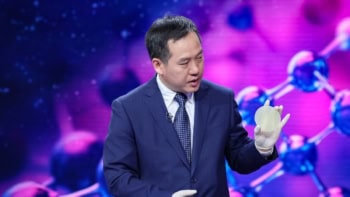
Credit: Detlav van Ravenswaay, Science Photo Library
By Margaret Harris
Like many physicists, I understand quantum mechanics only if I don’t actually think about it. Once I dig a bit deeper, I soon find myself scrabbling at the edges of some very big questions. Like, what does it actually mean for a wavefunction to “collapse”? And what role does the “observer” really play?
The so-called “many worlds” interpretation of quantum mechanics offers an intriguing answer to such questions. As postulated by the American physicist Hugh Everett III back in 1957, this theory suggests (among other things) that whenever we perform a quantum-mechanical experiment, the world splits into many alternative futures – as many futures, in fact, as there are possible outcomes of the experiment.
One advantage to this interpretation is that it bids a tidy goodbye to paradoxes like Schrodinger’s cat. Under many-worlds theory, there exists one universe in which the mind-boggling moggy is dead, and another in which it’s mewing its head off for supper. Simple. But given that the theory also suggests a riotous proliferation of probably-unobservable alternate universes, it is perhaps unsurprising that Everett initially struggled to get it taken seriously.
If this were a Hollywood movie, Everett’s life post-1957 would have been a noble (and ultimately successful) battle for recognition. In one of his possible worlds, perhaps that’s exactly what happened. In this one, however, Everett quit physics in disgust; took a job in military research; became an alcoholic; and died of a heart attack in 1982 – just when his theory was beginning to gain traction in the physics community.
To learn a bit more about Everett and his theory, I’d urge you to sign up for the latest in physicsworld.com‘s lecture series. In “Many Worlds: How Hugh Everett III Changed Quantum Mechanics”, Everett biographer Peter Byrne will describe the ways in which many-worlds theory evolved over the course of its inventor’s often-troubled life.
The lecture is free and will take place on Thursday 14 October at 4.00 p.m. BST. You’ll also be able to view the lecture afterwards. For more details, please see the registration page.



